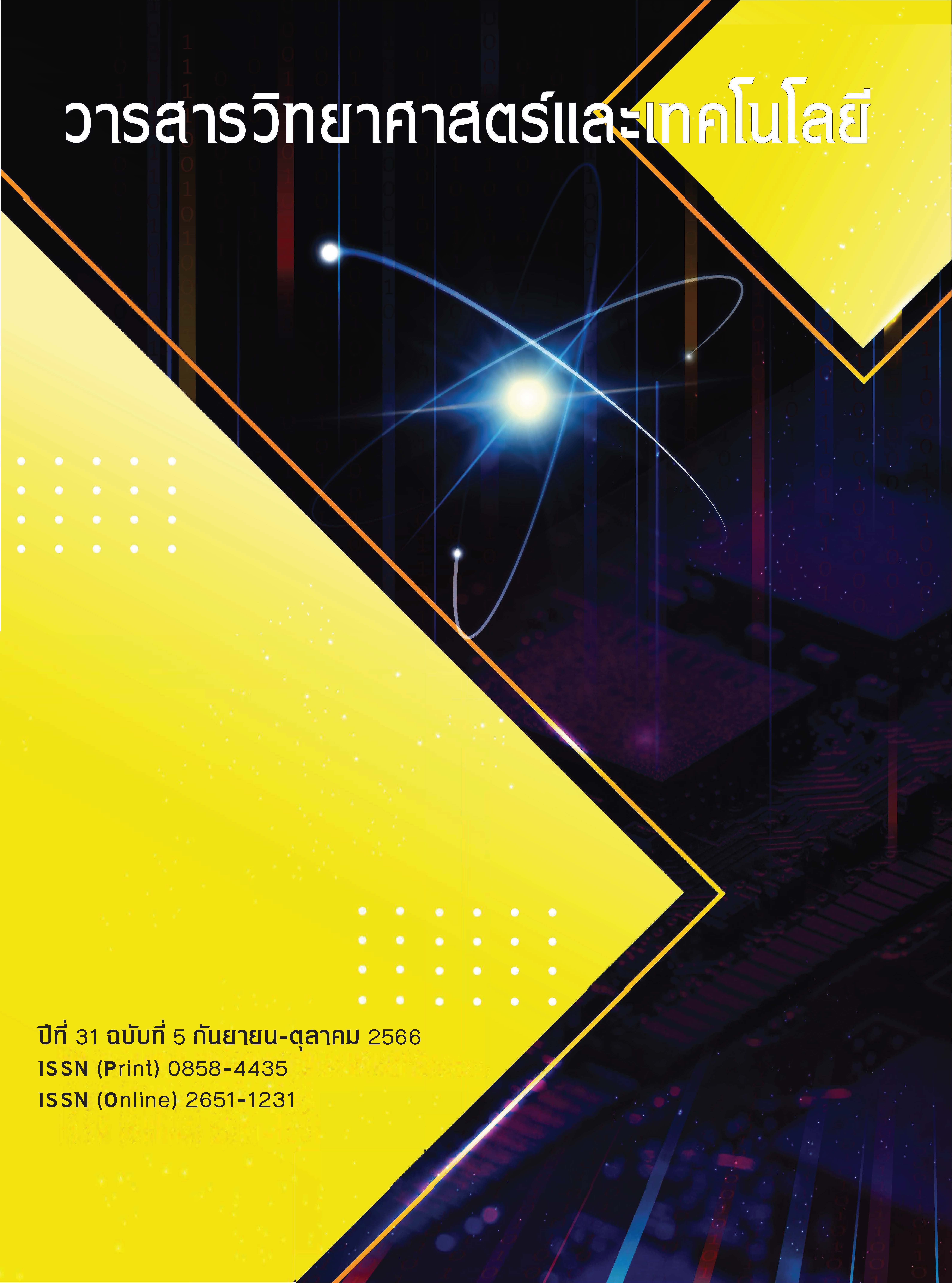Non-destructive Concrete Curing in Early Age Evaluation System with Microwave Reflection Power Ratio
Main Article Content
Abstract
This paper presents a non-destructive system for assessing the curing quality of early-age concrete using the transmission of two frequency signals. The methodology involves transmitting signals to the concrete sample, measuring the reflected power signal, and then analyzing and comparing the responses to determine the concrete’s curing quality. The system consists of the transmitted and received parts. The transmitted part generates a signal by a high-frequency synthesizer and sends the signal through a directional coupler to patch the antenna prototype. The antenna serves to propagate signal power to the concrete sample and receives a reflected signal from the concrete sample backward to the received part. The reflected signal was detected by a directional coupler and converted to DC voltage by a linear power detector, converted to digital signal 10-bit by an ADC convertor, and then processed with microcontroller board. The voltage level from concrete measurement at an early age from 10 to 120 hours at 2.4 GHz was in the range of 0.844 to 0.94 V and 0.845 to 0.959 V, at 2.5 GHz was in the range of 0.871 to 0.876 V and 0.873 to 0.866 V, respectively. The voltage data measurement from two frequencies was calculated ratio of 2.4/2.5 GHz for the different wet curing and air curing concrete. In age below 54 hours, the ratio was different in the range of 0.969 to 1.009 and 0.968 to 1.045. In age between 65 and 120 hours, it was in the range of 1.026 to 1.123 and 1.073 to 1.183, respectively. Considering the absolute voltage ratio difference between wet and air curing, in age less than or equal to 37 hours it was slightly different when age increased 38 to 81 hours the absolute voltage ratio difference was 1.003±0.014 to 1.036±0.026 and most different when age in the range of 82 to 120 hours that was 1.076±0.032 to 1.114±0.031. The clear difference in ratio results in effective classifying of curing concrete quality.
Article Details
References
Makul, N., Chatveera, B. and Ratanadecho, P., 2009, Use of microwave energy for accelerated curing of concrete: a review, Songklanakarin Journal of Science and Technology, 31(1): 1-13.
CPAC academy, 2000, Technology concrete. CPAC, Bangkok.
Gao, S., Chung, K. L., Cui, A., Ghannam, M., Luo, J., Wang, L., Ma, M. and Liao, Z., 2021, Accurate strength prediction models of ordinary concrete using early-age complex permittivity. Materials and Structures, 54 (172): 1-19.
Pucinotti, R., 2015, Reinforced concrete structure: Nondestructive in situ strength assessment of concrete. Construction and Building Materials, 75 :331-341.
Bois, K. J., Benally, A. D. and Zoughi, R., 2000, Microwave Near-Field Reflection Property Analysis of Concrete for Material Content Determination, IEEE Transaction on Instrumentation and Measurement, 49(1): 49-55
Helal, J., Sofi, M. and Mendis, P., 2015, Non-Destructive Testing of Concrete: A Review of Methods. Electronic Journal of Structural Engineering, Special Issue 14(1): 97-105.
Department of Public Works and Town and Country Planning, 2008, Standard for inspection of reinforced concrete structures by non-destructive testing methods, 1st Ed, Bangkok.
Hannachi, S. and Guetteche, M. N., 2012, Application of the combined method for evaluating the compressive strength of concrete on site, Open Journal of Civil Engineering, 2: 16-21.
Bogas, J. A., Gomes, M. G and Gomes, A., 2013, Compressive strength evaluation of structural lightweight concrete by non-destructive ultrasonic pulse velocity method, Ultrasonics 53: 962–972.
Asteris, P. G. and Mokos, V. G., 2020, Concrete compressive strength using artificial neural networks, Neural Computing and Applications, 32: 11807–11826.
Skentou, A. D., Bardhan, A., Mamou, A., Lemonis, M. E., Kumar, G., Samui, P., Armaghani, D. J. and Asteris, P. G., 2023, Closed‑form equation for estimating unconined compressive strength of granite from three non‑destructive tests using soft computing models, Rock Mechanics and Rock Engineering, 56: 487–514.
Khormani, M., Jaari, V. R. K., Aghayan, I., Ghaderi, S. H. and Ahmadyfard, A., 2020, Compressive strength determination of concrete specimens using X-ray computed tomography and finite element method, Construction and Building Materials, 256: 1-12.
Wahab, A.. Aziz, M. M. A., Sam, A. R. M., You, K. Y., Bhatti A. Q. and Kassim, K. A., 2019, Review on microwave nondestructive testing techniques and its applications in concrete technology, Construction and Building Materials, 209: 135–146.
Shen, P., Lu, L., He, Y., Wang, F. and Hu, S., 2016, Hydration monitoring and strength prediction of cement-based materials based on the dielectric properties, Construction and Building Materials, 126: 179–189.
Ozturk, M., Sevim, U. K., Akgol, O., Unal, E. and Karaaslan, M., 2018, Determination of physical properties of concrete by using microwave nondestructive techniques, ACES JOURNAL, 33(3): 265-272.
Chung, K. L., Yuan, L., Ji, S., Sun, L., Qu, C.and Zhang, C., 2017, Dielectric characterization of Chinese standard concrete for compressive strength evaluation, Applied Science, 7(177): 1-14.
M., Jamil, M. K., Hassan, Zain, M. F. M. and Al-Mattarneh, H. M. A., 2013, Concrete dielectric properties investigation using microwave nondestructive techniques, Materials and Structures, 46:77–87.
Lai, W.L., Kou, S. C., Tsang, W.F. and Poon, C.S., 2009, Characterization of concrete properties from dielectric properties using ground penetrating radar. Cement and Concrete Research, 39: 687–695.
Cerveny, S., Arrese-Igor, S., Dolado, J. S., Gaitero, J. J., Alegría, A. and Colmenero, J., 2011, Effect of hydration on the dielectric properties of C-S-H gel, The Journal of Chemical Physics, 134(034509) :1-9.
Riddle, B., Baker-Jarvis, J. and Krupka, J., 2003, Complex permittivity measurements of common plastics over variable temperatures, IEEE Transection on Microwave Theory and Techniques, 51(3): 727-733.
Pozar, D. M., 2012, Microwave engineering. 4th Ed. John Wiley & Sons. USA.


